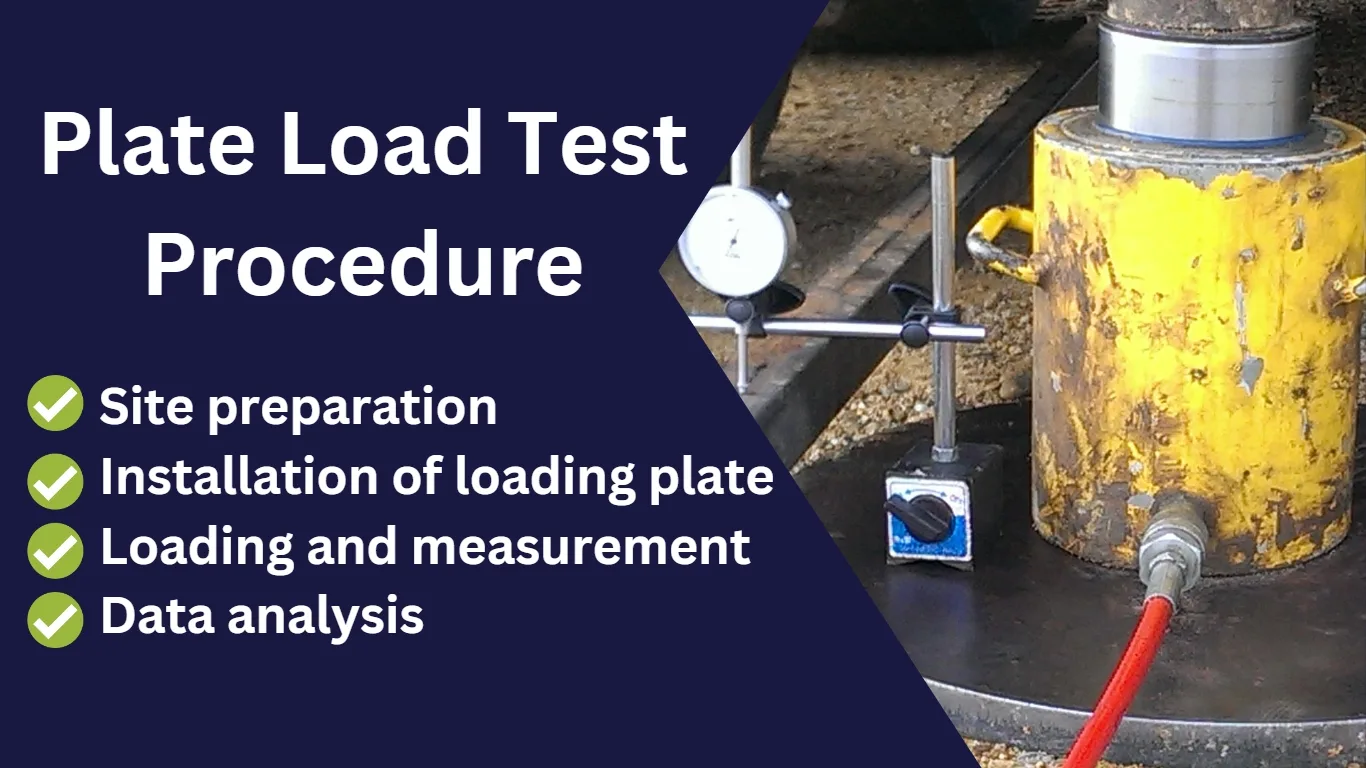Plate Load Test Procedure
A plate load test, also known as a bearing capacity test, is a field test used to determine the load-bearing capacity of the soil. The procedure typically involves the following steps:
- Site preparation: The test area is cleared and levelled, and the soil surface is compacted to remove any loose or unstable material.
- Installation of loading plate: A steel plate, typically with a diameter of 0.5 to 1 meter, is placed on the soil surface and levelled. The plate is then loaded with a known weight.
- Loading and measurement: The plate is loaded with incremental weights, and the settlement of the plate is measured at each increment. The settlement is typically measured using dial gauges or electronic sensors.
- Data analysis: The data collected during the test is analyzed to determine the load-bearing capacity of the soil. The results can be used to design foundations and other structures on the site.
- Cleanup and restore the site
It is important to note that the procedure may vary depending on the specific requirements of the project and local regulations. It’s always recommended to have a qualified engineer or geotechnical expert to conduct the test and interpret the results.
Test function:
Determining the bearing capacity of the soil and determining the amount of decline resulting from loads and the type of foundations according to the load values and the decline resulting from loads Test idea that we know the value of loads and the amount of drop caused by loads through meters found in the device used in the test.
Join Telegram Channel Click Here
Device components:
1- Metal cylinder
2- A hodologic piston connected to agriculture and through farmers we supply loads on the soil and the farmers contain a meter to know the value of the load that we supply
3- Three meters through which we can know the landing values resulting from the loads
4- Iron pieces placed on top of the piston to surround the piston under any heavy stomach and the condition of the stomach is that its weight is not less than 20 tons
5- Corners of iron on which the meters are placed
6- Tables with which meter readings are recorded
More Interesting Construction Articles Click Here
Test steps:
1- The cylinder is placed under the stomach heavy and then the hydraulic piston is placed over the cylinder and the iron pieces are placed over the piston to surround the piston in the stomach
2- Place long corners of iron on both sides of the cylinder and install 3 meters and whistle their readings
3- The hydraulic piston is loaded with 1kg/cm2 load
4- The readings of the three meters are taken every 3 minutes and with 5 readings and these readings indicate the decline that occurs in the soil as a result of the load that we supply on the piston that is installed on the cylinder
5- Then raise the load to 2kg/cm2 and record the readings of 3 meters every 3 minutes And so until we get to a 5kg/cm2 load. After that, we gradually reduce loads (unloading)
6- Reduce the load to 4kg/cm2 by planting the hydraulic piston and record the results of the three meters in the tables and with 5 readings and between each reading and the second 3 minutes.
7- Then reduce the load to 3 kg/cm2 and also take, and record the readings of the three meters And so until we get to pregnancy zero.And each time we record the readings of the three meters every 3 minutes and with 5 readings per meter.
We take the results that we recorded in the tables and draw curve curve between loads and landings and through the results in the tables and curves the bear capacity of the soil and the drop caused by the loads is calculated.
